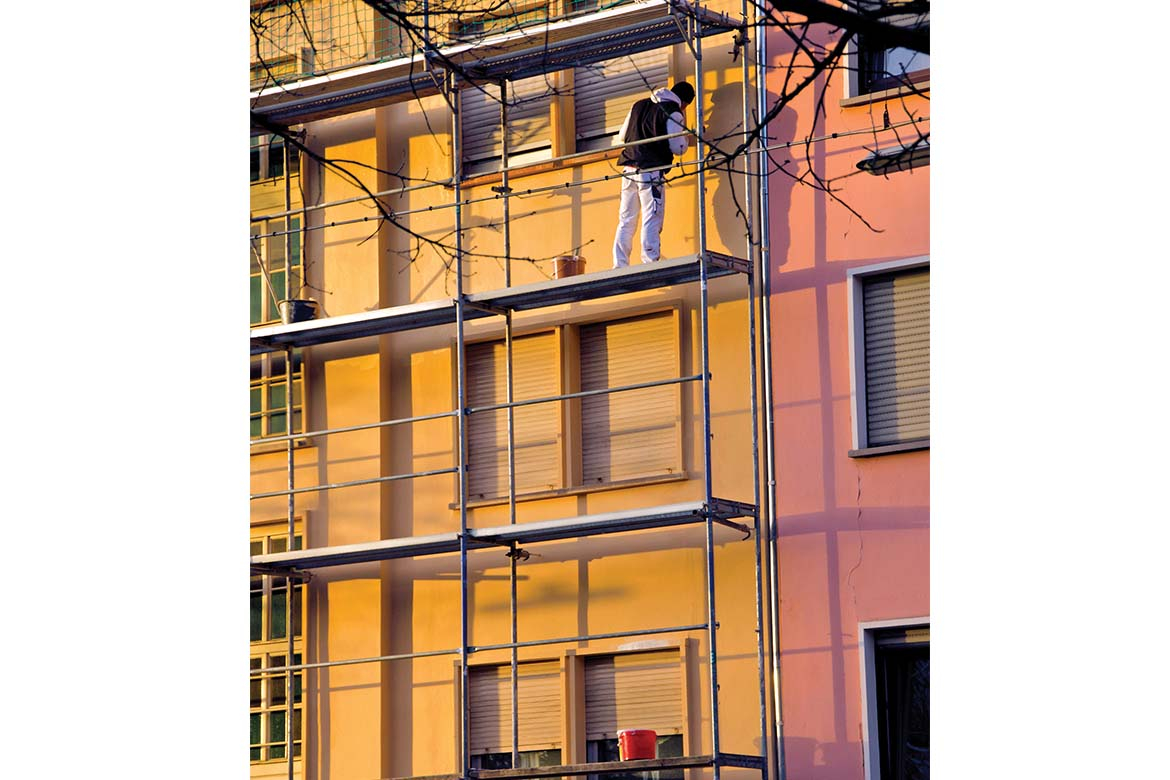Scaffold security
Take a walk around any major city in the UK and there is one sight that is becoming increasingly common – scaffolding. In fact, it is so common that most of us begin to take it for granted; except, that is, for the criminal mind.
From private individuals through to the large corporate, scaffolding is a necessity for many. It may be a one-off requirement for a roof repair or it may be required to service a whole portfolio of properties in one street or across the nation.
Whatever the requirement, to the public scaffolding can be viewed in many ways. It can be seen as evidence of development, regeneration, economic recovery or it can be viewed as necessary building repair or preservation. To the criminal fraternity, however. it can also be viewed as an alternative entry route into what are often high value properties, many containing valuable assets. Even vacant or void properties can contain highly desirable assets such as fireplace surrounds or antique fittings. The criminal mind can also see scaffolding as a convenient platform to access roof lead; unless, of course, the scaffolding is alarmed. The introduction of alarms onto the scaffold structure presents the criminal with a very unwelcome scenario and can be more than enough to deter the opportunist.
Scaffold alarms
Scaffold alarms are not new. Aside from their crime prevention qualities, they can also be a contributor to enhanced health and safety measures. In an increasingly litigious society, that can only be welcomed. The mere presence of scaffolding can provide the late night drinker or the mischievous youth with an opportunity to literally scale new heights. The introduction of alarms on scaffolding can detect and deter those who do not have a legitimate right to be there in the first place.
As with any other security product, scaffold alarms have a real role to play in the prevention of crime. Similarly, just like any other security product, its effectiveness depends upon fit and proper installation and maintenance. Until now there has not been a standard of certification that allows the consumer, the property owner or the managing agent to access guidance on how scaffold alarms should be fitted. Fit them incorrectly, in the wrong place or in insufficient quantity and they lose their effectiveness. Fit them correctly and you have a real asset. It is for this reason that NSI chose to produce a Code of Practice (NCP115) for this area. Scaffold alarms are a natural extension to the portfolio of NSI who have been synonymous with robust alarm certification for over 40 years. The Code, launched in January this year, covers design, safety, installation, testing, commissioning and handover, documentation and maintenance.
A standard for scaffold alarms
For the first time, end users, managing agents, insurers and specifiers have a standard that sets out a best practice option. The Code has already witnessed significant demand from those who regularly require scaffolding solutions across a portfolio of their properties or those who seek the knowledge of what can be deemed good practice.
Those expressing an interest have included local authorities, police, insurers and the industry itself. Feedback tells us these groups are grateful that they now have a document and a standard by which to measure scaffold alarm installation and maintenance.
Big business
Scaffold alarms are big business. As with any industry, big business attracts many providers. Panthera and Permanex are just two names which you will regularly see on alarmed scaffolding. Multiple providers, however, leave the consumer with the dilemma of deciding which providers are the quality companies. The Code of Practice, written specifically for this discipline, provides an additional tool to ease this procurement decision and provide that added reassurance.
Panthera became the first company certificated to this Code of Practice when they gained their NSI approval earlier this year. It will allow them, and any others who subsequently gain NSI approval to this Code, to prove that they take their business seriously and deliver a truly beneficial service to their clientele.
Scaffolds and scaffold alarms may not be the first thought of many who seek security solutions, or indeed for those who simply face having scaffolding placed around their domestic and/or commercial premises. Nonetheless, it is an important consideration. To omit the thought altogether, however, could prove costly and it is worth checking insurance conditions for your property ahead of any scaffolding being erected.
Chris Pinder
External Affairs Director
National Security Inspectorate


